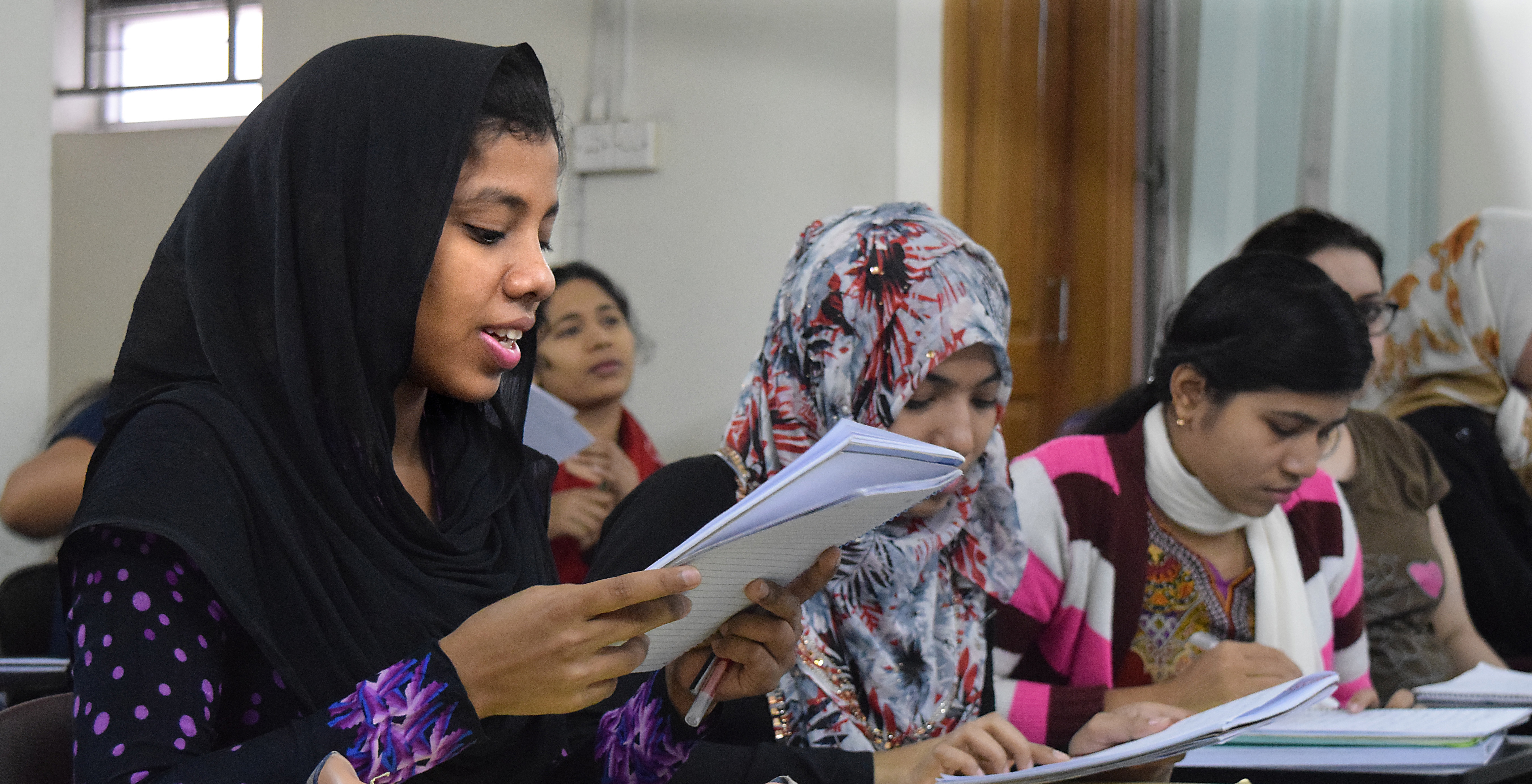This piece was sponsored by Pathways for Promise in partnership with the Ethical Writers & Creatives.
[/vc_column_text][vc_separator][vc_column_text]Three months ago, I had a lofty idea to bring Fashion Revolution Day to Austin. So, I started cutting my teeth on localizing the national concept. I’m lucky to have two great partners who really understand the ethical, sustainable and fair trade fashion scene here. Through our collective effort, we’re planning an entire month of ‘feature weekends’ to highlight local brands and get Austinites talking about the issues in fashion.Our intent is to spark thought versus encouraging shopping. The month will end with a main event on April 24th, where we’ll join the global movement to ask “who made my clothes.”[/vc_column_text][vc_tta_accordion][vc_tta_section title=”What is Fashion Revolution Day? ” tab_id=”1488756240696-24262cfd-36b2″][vc_column_text]If you’ve been reading my stuff for a while, the 2013 Rana Plaza Factory collapse in Bangladesh should be familiar to you. If it’s new, I recommend leveling up before reading the rest of this article.
Brush up on your knowledge
- The collapse: then and now
- The two major reform efforts: the Bangladesh Fire and Building Safety Accord and Fashion Revolution Day (I recommend reading their new Zine, MONEY FASHION POWER).
Why this is not our issue
The answer to this question is, unfortunately, riddled with complexity. Allow me to unpack it with an example. I spend a lot of time combing through e-commerce sites with pictures that map their supply chains and tout their commitment to ‘transparency.’ Yesterday, I even found a brand that offered a ‘virtual online manufacturing tour’ while simultaneously marketing one of its lines as ‘fast fashion.’ Say what?
My point: there aren’t any clear regulations when it comes to ‘conscious consumerism,’ which leaves a lot of room for us to get duped, despite our good intentions.
Conscious consumerism promises a quick fix to fashion’s issues through a dollar vote. And we can’t help but be compelled by this idea. Shell out a few bucks and no one gets hurt? Sure! But it tricks us into thinking the work stops at the purchase. It doesn’t.
The issues in fashion are systemic and, I believe, best handled at the local level, where people are dialed into the specific cultural needs. This is where Pathways comes in.
The same time I asked this question, the Ethical Writers Coalition received an inquiry. “Pathways for Promise seeks to break aspirational barriers for young women who represent severely marginalized groups, including those working in Bangladesh’s garments factories.” Here was my affirmation. I knew how to approach ethical fashion in my community, and another organization was doing it in Bangladesh.
The Pathways Approach
Pathways believes a woman’s potential is not defined by the parameters of the factory floor. It’s working to defy the odds for Bangladeshi garment workers by providing them with free education through the Asian University for Women (AUW).
It is also focused on selecting the right women for the program. Often times, the women that do get rare educational opportunities are identified based on their competency in English. Pathways believes English is not the only measurement of intelligence and, instead, selects students based on academic ability, commitment to their community, and leadership potential. It tests for empathy, courage, and a sense of outrage at injustice in its placement exams.
Furthermore, scholars are not required to return to the garment industry after graduation. Rather, Pathways hopes the education it provides will help to foster new voices in fashion’s sustainable development.
How?
Identify garment workers
Bangladesh has nearly four million women who work in the garment sector. In order to identify talent in this massive group, AUW offered admissions tests on the shop floors of factories last year. Participating factory owners offered a huge incentive: if workers were accepted, they would still receive monthly wages for their five years at AUW. Over 1,000 workers applied and more than 30 are now enrolled in Pathways.
Focus on educating Rohingya women
The Rohingya are an ethnic minority in Burma who have long been victims, both as unrecognized citizens in Burma and unwanted entrants in Bangladesh. Through a concerted effort in collaboration with community leaders, 50 women have enrolled in the program. Upon graduation, they will represent the largest single cohort of Rohingya women educated to this level.
Grow community impact
Last year, Pathways also established an extension program called Education Cells. They expand Pathways impact in the surrounding community. Current students and recent graduates offer weekly classes to the local community, following a curriculum that mirrors the original program: English, math, & computer literacy. As enrollment grows, additional sessions on health, well-being, and martial arts may be added.
The Cells give the community examples of role models and help to dispel any inhibitions they have about their own aspirations and development. [/vc_column_text][/vc_column][/vc_row][vc_row][vc_column][vc_single_image image=”2131″ img_size=”full”][/vc_column][/vc_row][vc_row][vc_column][vc_column_text]After doing my own advocacy in Austin and learning about the Pathways model, I can answer my own question. My event may not direct affect Bangladeshi workers, but that doesn’t mean it’s not needed. There is value in every effort, whether it’s a national movement like Fashion Revolution Day or a small, conscious purchase. But:
The real opportunity for change comes from localized expertise and, more importantly, having the prudence to defer to it.
During its inaugural year, the Pathways for Promise student retention rate was 96%.[/vc_column_text][vc_separator][vc_column_text]
Learn more about the Asian University for Women.
Learn more about Pathways for Promise.
Follow their journey on social media: Facebook | Twitter
Related posts in this series
Pathways for Promise | Walking With Cake
Partners, Not Saviors: Pathways for Promise Promotes Change from Within | StyleWise
Forget the Slogan T-Shirt Feminism is Educating Female Garment Workers | EcoCult
The Future is Female | The Note Passer
Let’s Talk About Food Insecurity, Another Major Consequence of Climate Change | My Kind Closet
Season 02, Episode 52 | Conscious Chatter Podcast
For Those Who Can’t Speak for Themselves, Use Bold Voices | Honestly Modern
[/vc_column_text][/vc_column][/vc_row][vc_row][vc_column][/vc_column][/vc_row]


